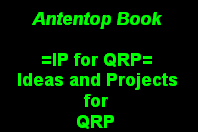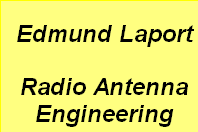


Antentop is FREE e-magazine devoted to Antennas and Amateur Radio an
Special page devoted to
Current Distribution in the A.L.C.

Custom Search
|
ANTENTOP-
03- 2003, # 004 |
Current
Distribution in the A.L.C.
|
||
|
|
|||
|
More info from Cecil, W5DXP on the subject: "Yuri Blanarovich wrote:
Hi Yuri, 73, Cecil http://www.qsl.net/w5dxp"
Yuri Blanarovich wrote: Yuri, ----------R2-+ +-R1----------FP---
... other half EZNEC reports 0.85 amps through R1 and 0.57 amps through
R2, a difference of 33%. If one could model the inductive loading
reactance as an actual physical coil instead of a
lumped single point impedance, results would be similar
to the above. |
Now here is something that might blow some minds. The
inductive stub above is ten feet long. That's about 1/8WL on 20m.
A 1/8WL shorted stub equals +jZ0. The results
of running the above antenna on 20m is that the current
through R1 is 185 degrees out of phase with the current through
R2. At the time when the current through R2 is flowing toward
the end of the antenna, the current through R1 is flowing toward
the feedpoint. Wonder what Kirchhoff would say about that. If
you replace the stub with a coil of the same reactance, not much
changes. Tell W8JI to
stop using lumped circuit analysis when he should be using distributed
circuit analysis. :-) 73, Cecil http://www.qsl.net/w5dxp" W5DXP: Mark, NM5K wrote:
W5DXP:
Ifwd-in-->
coil Ifwd-out-->
|
||
|
|
|
||
|
Page 59 |
|||
 |
 |
 |
 |
Just for Fun:

Powered byIP2Location.com
Thanks for your time!
Last Updated:
February 27, 2020 21:52




